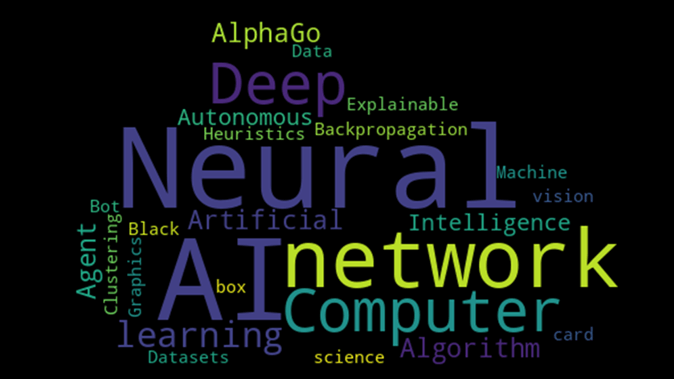Introduction
One of the main factors for successful machine learning is choosing the right graphics card that will allow you to process large amounts of data and perform parallel computations as quickly and efficiently as possible. Most machine learning tasks, especially training deep neural networks, require intensive processing of matrices and tensors. Note that TPUs, FPGAs and specialized AI chips have been gaining popularity recently.
What graphics card characteristics are important for performing machine learning?
When choosing a graphics card for machine learning, there are a few key features to look for:
- Computing power: the number of cores/processors determines the parallel processing capabilities of the graphics card.
- GPU memory: large capacity allows you to work efficiently with large data and complex models.
- Support for specialized libraries: hardware support for libraries such as CUDA or ROCm speeds up model training.
- High performance support: fast memory and wide memory bus provide high performance for model training.
- Compatibility with machine learning frameworks: you should ensure that the selected graphics card is fully compatible with the frameworks you require and supported developer tools.
NVIDIA is the leader in machine learning GPUs today. Optimized drivers and support for CUDA and cuDNN enable NVIDIA GPUs to significantly accelerate computation.
AMD GPUs are good for gaming, they are less common in machine learning due to limited software support and the need for frequent updates.
GPU benchmarks for machine learning
| Memory size (Gb) | Clock speed, GHz | CUDA cores | Tensor cores | RT cores | Memory bandwidth (Gb/s) | Video memory bus width (bit) | Maximum power (W) | NVLink | Price (USD) | |
| Tesla V100 | 16/32 | 1,24 | 5120 | 640 | - | 900 | 4096 | 300 | Only for NVLink models | 14 447 |
| Quadro RTX 8000 | 48 | 1,35 | 4608 | 576 | 72 | 672 | 384 | 360 | 2 Quadro RTX 8000 GPUs | 8200 |
| A100 | 40/80 | 1,41 | 7936 | 432 | - | 1555 | 5120 | 300 | MIG | 10000 |
| A 6000 Ada | 48 | 2,5 | 18176 | 568 | 142 | 768 | 384 | 300 | yes | 6800 |
| RTX A 5000 | 24 | 1,62 | 8192 | 256 | 64 | 768 | 384 | 230 | 2x RTX A5000 | 2000 |
| RTX 4090 | 24 | 2,23 | 16384 | 512 | 128 | 1 008 | 384 | 450 | no | 1599 |
| RTX 4080 | 16 | 2,21 | 9728 | 304 | 76 | 717 | 256 | 320 | no | 1199 |
| RTX 4070 | 12 | 1,92 | 7680 | 184 | 46 | 504 | 192 | 200 | no | 599 |
| RTX 3090 TI | 24 | 1.56 | 10752 | 336 | 84 | 1008 | 384 | 450 | yes | 2000 |
| RTX 3080 TI | 12 | 1,37 | 10240 | 320 | 80 | 912 | 384 | 350 | no | 1499 |
NVIDIA Tesla V100
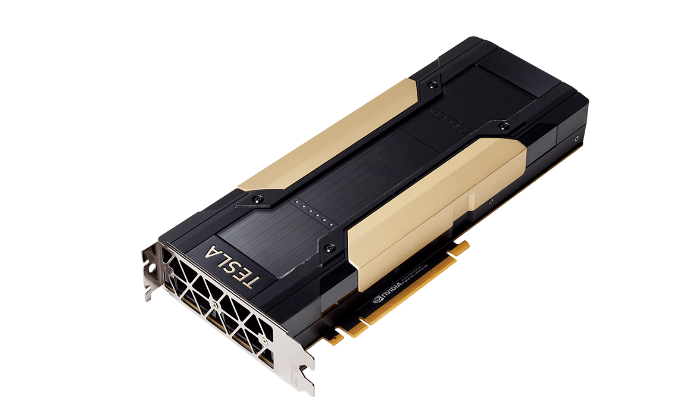
A tensor-core GPU designed for artificial intelligence, high-performance computing (HPC), and machine learning applications. Based on the NVIDIA Volta architecture, the Tesla V100 delivers 125 trillion floating point operations per second (TFLOPS).
Advantages
- High performance: Tesla V100 features Volta architecture with 5120 CUDA cores for very high performance in machine learning tasks. It can process large amounts of data and perform complex computations at high speed.
- Large memory capacity: 16 gigabytes of HBM2 memory enables efficient processing of large amounts of data when training models, which is especially useful for large datasets. The 4096-bit video memory bus allows for high data transfer rates between the processor and video memory, improving the training and output performance of machine learning models.
- Deep Learning: The graphics card supports a variety of deep learning technologies, including Tensor Cores, which accelerate computing using floating-point operations. This significantly reduces model training time and improves model performance.
- Flexibility and scalability: Tesla V100 can be used in both desktop and server systems. It supports various machine learning frameworks such as TensorFlow, PyTorch, Caffe and others, which provides flexibility in choosing tools for model development and training.
Disadvantages
- High cost: NVIDIA Tesla V100 is a professional solution and is priced accordingly. Its cost ($14,447) can be quite high for individuals or small machine learning teams.
- Power consumption and cooling: The Tesla V100 graphics card consumes a significant amount of power and generates a significant amount of heat. This may require appropriate cooling measures in your system and may result in increased power consumption.
- Infrastructure requirements: To fully utilize the Tesla V100, a suitable infrastructure is required, including a powerful processor and sufficient RAM.
NVIDIA A100
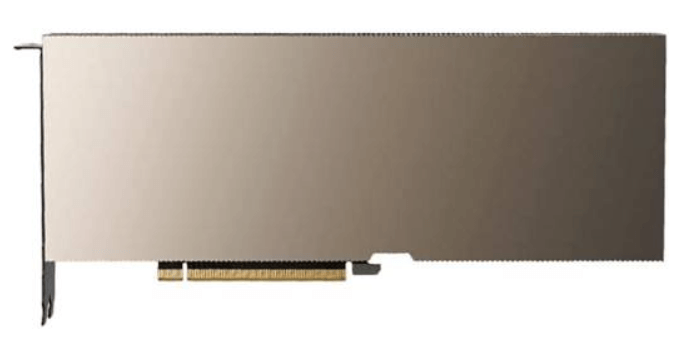
Delivers the performance and flexibility required for machine learning. Powered by the latest NVIDIA Ampere architecture, the A100 delivers up to five times the learning performance of previous-generation GPUs. The NVIDIA A100 supports a variety of artificial intelligence applications and frameworks.
Advantages
- High performance: a large number of CUDA cores - 4608.
- Large memory size: The NVIDIA A100 graphics card has 40GB of HBM2 memory, allowing it to efficiently handle large amounts of data when training deep learning models.
- Supports NVLink technology: This technology enables multiple NVIDIA A100 graphics cards to be combined into a single system to perform parallel computing, which improves performance and accelerates model training.
Disadvantages
- High Cost: The NVIDIA A100 is one of the most powerful and high-performance graphics cards on the market, so it comes at a high price tag of $10,000.
- Power consumption: Using the NVIDIA A100 graphics card requires a significant amount of power. This can result in higher power costs and may require additional precautions when deployed in large data centers
- Software Compatibility: NVIDIA A100 graphics card requires appropriate software and drivers for optimal performance. Some machine learning programs and frameworks may not fully support this particular model.
NVIDIA Quadro RTX 8000
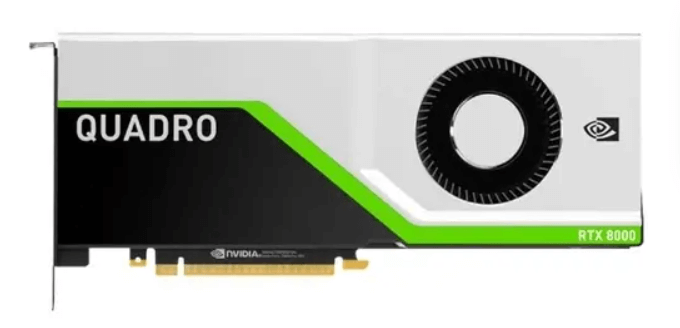
A single Quadro RTX 8000 card can render complex professional models with realistic shadows, reflections and refractions, giving users quick access to information. Its memory is expandable up to 96GB using NVLink technology.
Advantages
- High performance: The Quadro RTX 8000 features a powerful GPU with5120 CUDA cores.
- Support for Ray Tracing: real-time hardware-accelerated ray tracing allows you to create photorealistic images and lighting effects. This can be useful when working with data visualization or computer graphics as part of machine learning tasks.
- Large memory size: 48GB of GDDR6 graphics memory provides ample storage space for large machine learning models and data.
- Library and framework support: The Quadro RTX 8000 is fully compatible with popular machine learning libraries and frameworks such as TensorFlow, PyTorch, CUDA, cuDNN and more.
Disadvantages
- High cost: Quadro RTX 8000 is a professional graphics gas pedal, which makes it quite expensive compared to other graphics cards. It is priced at 8200 dollars.
RTX A6000 Ada
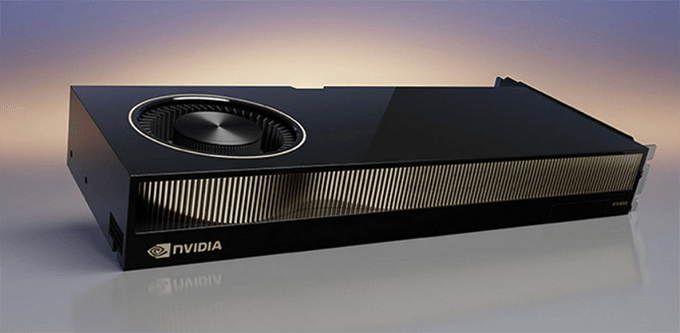
This graphics card offers the perfect combination of performance, price and low power consumption, making it the best option for professionals. With its advanced CUDA architecture and 48GB of GDDR6 memory, the A6000 delivers high performance. Training on the RTX A6000 can be performed with maximum batch sizes.
Advantages
- High performance: Ada Lovelace architecture, third-generation RT cores, fourth-generation tensor cores, and next-generation CUDA cores with 48GB of video memory.
- Large memory size: NVIDIA RTX A6000 Ada graphics cards are equipped with 48 GB of memory, allowing to efficiently work with large amounts of data when training models.
- Low power consumption.
Disadvantages
- High cost: the RTX A6000 Ada costs around $6,800.
NVIDIA RTX A5000
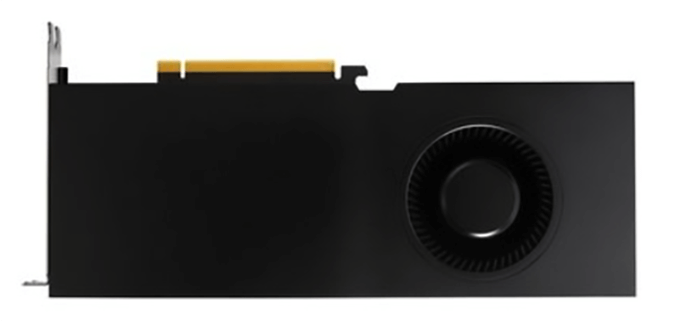
The RTX A5000 is based on NVIDIA's Ampere architecture and features 24GB of memory for fast data access and accelerated training of machine learning models. With 8192 CUDA cores and 256 tensor cores, the card has tremendous processing power to perform complex operations.
Advantages
- High performance: A large number of CUDA cores and high memory bandwidth allow you to process large amounts of data at high speed.
- AI hardware acceleration support: the RTX A5000 graphics card offers hardware acceleration for AI-related operations and algorithms.
- Large memory size: 24GB GDDR6 video memory allows you to work with large datasets and complex machine learning models.
- Support for machine learning frameworks: The RTX A5000 graphics card integrates well with popular machine learning frameworks such as TensorFlow and PyTorch. It has optimized drivers and libraries that allow you to leverage its capabilities for model development and training.
Disadvantages
- Power consumption and cooling: graphics cards of this class usually consume a significant amount of power and generate a lot of heat q1. To utilize the RTX A5000 efficiently, you need to ensure proper cooling and have sufficient power supply.
NVIDIA RTX 4090
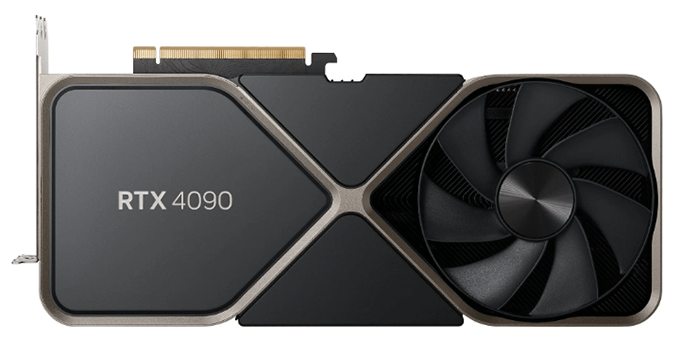
This graphics card offers high performance and features that make it ideal for powering the latest generation of neural networks.
Advantages
- Outstanding performance: NVIDIA RTX 4090 is capable of efficiently processing complex computations and large amounts of data, accelerating the training of machine learning models.
Disadvantages
- Cooling is one of the main issues users may encounter when using the NVIDIA RTX 4090. Due to its powerful heat dissipation, the card can become critically hot and automatically shut down to prevent damage. This is especially true in multi-card configurations.
- Configuration limitations: GPU design limits the ability to install more NVIDIA RTX 4090 cards in a workstation.
NVIDIA RTX 4080
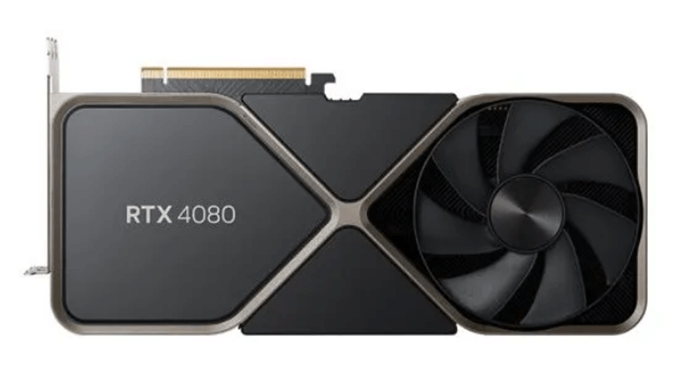
It is a powerful and efficient graphics card that provides high performance in the field of artificial intelligence. With its high performance and affordable price, this card is a good choice for developers looking to get the most out of their systems. The RTX 4080 has a three-slot design, allowing up to two GPUs to be installed in a workstation.
Advantages
- High performance: The card is equipped with 9728 NVIDIA CUDA cores for high performance computing in machine learning applications. It also features tensor cores and ray tracing support for more efficient data processing.
- The card is priced at $1,199, giving individuals and small teams a productive machine learning solution.
Disadvantages
- SLI limitation: The card does not support NVIDIA NVLink with SLI functionality, which means that you cannot combine multiple cards in SLI mode to maximize the performance.
NVIDIA RTX 4070

This graphics card is based on NVIDIA's Ada Lovelace architecture and features 12GB of memory for fast data access and accelerated training of machine learning models. With 7,680 CUDA cores and 184 tensor cores, the card has good processing power to perform complex operations. A great choice for anyone who is just starting to learn machine learning.
Advantages
- Sufficientperformance: 12GB of memory and 7,680 CUDA cores allow you to handle large amounts of data.
- Low power consumption: 200 W.
- The low cost at $599.
Disadvantages
- Limited memory: 12 GB of memory might limit the ability to process large amounts of data in some machine learning applications.
- No support for NVIDIA NVLink and SLI: The cards do not support NVIDIA NVLink technology for combining multiple cards in a parallel processing system. This can limit scalability and performance in multi-card configurations.
NVIDIA GeForce RTX 3090 TI
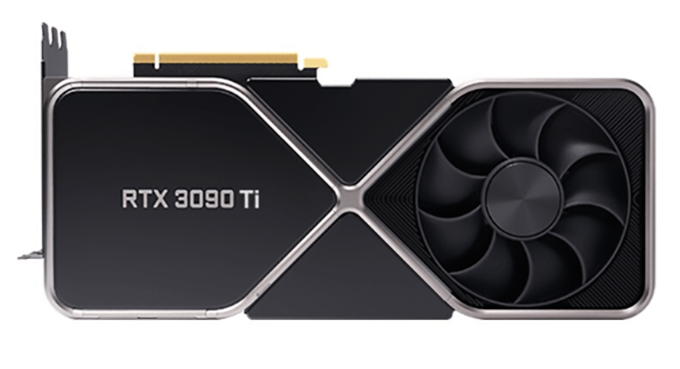
This is a gaming GPU that can also be used for deep learning. The RTX 3090 TI allows for peak single precision (FP32) performance of 13 teraflops and is equipped with 24GB of video memory and 10,752 CUDA cores.
Advantages
- High performance: Ampere architecture and 10,752 CUDA cores enable you to solve complex machine learning problems.
- Hardware Learning Acceleration: The RTX 3090 TI supports Tensor Cores technology, which provides hardware acceleration of neural network operations. This can significantly accelerate the training process of deep learning models.
- Large memory capacity: with 24GB of GDDR6X memory, the RTX 3090 TI can handle large amounts of data in memory without the need for frequent read and write operations to disk. This is especially useful when working with large datasets.
Disadvantages
- Power consumption: The graphics card has a high power consumption (450W), which requires a powerful power supply. This may incur additional costs and limit the use of the graphics card in some systems, especially when using multiple cards in parallel computing.
- Compatibility and support: there may be compatibility and incompatibility issues with some software platforms and machine learning libraries. In some cases, special customizations or software updates may be required to fully support the video card.
NVIDIA GeForce RTX 3080 TI

The RTX 3080 TI is a great mid-range card that offers great performance and is a good choice for those who don't want to spend a lot of money on professional graphics cards.
Advantages
- High Performance: The RTX 3080 features Ampere architecture with 8704 CUDA cores and 12GB of GDDR6X memory, providing high processing power for demanding machine learning tasks.
- Hardware Learning Acceleration: The graphics card supports Tensor Cores, which enables significant acceleration in neural network operations. This contributes to faster training of deep learning models.
- It's relatively affordable at $1,499.
- Ray Tracing and DLSS: The RTX 3080 supports hardware-accelerated Ray Tracing and Deep Learning Super Sampling (DLSS). These technologies can be useful when visualizing model results and provide higher quality graphics.
Disadvantages
- Limited memory capacity, 12GB, may limit the ability to handle large amounts of data or complex models that require more memory.
If you're interested in machine learning, you will need a good graphics processing unit (GPU) to get started. But with so many different types and models on the market, it can be hard to know which one is right for you.
Choosing the best GPU for machine learning depends on your needs and budget.

